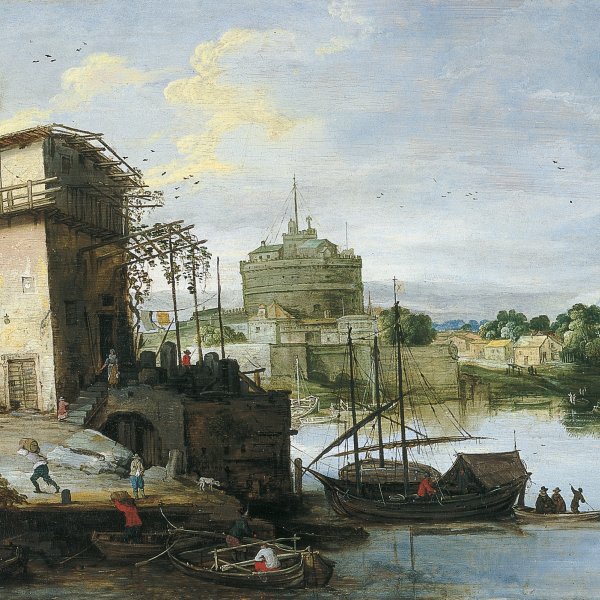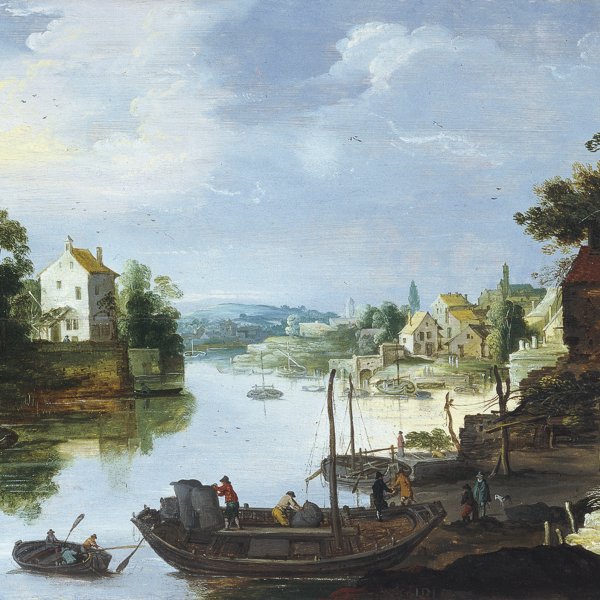Master of the Monogram IDM (Circle of Joos de Momper?)
Joos de Momper was a Flemish painter born in Antwerp in 1654 into a family of artists. He trained with his father, the painter and art dealer Bartholomäus de Momper. At the early age of seventeen, in 1581 De Momper’s father, at that time dean of the painters’ guild in Antwerp, registered him in that association. It is thought that the artist may have travelled to Italy shortly after this date, suggested by an inventory of 1624 that mentions Lodewijk Toeput, an artist active in Treviso, as his teacher. It is not known how long De Momper remained in Italy, but in 1590 he is documented in Antwerp on the occasion of his marriage to Elisabeth Gobyn. In 1594 De Momper collaborated with Adam van Noort, Tobias Verhaecht and Cornelis Floris on the decorative programme to celebrate the entry of the Archduke Ernest into Antwerp. Shortly after this he became one of the Archduke’s court painters, a position he subsequently occupied at the court of the Archduke and Archduchess Albert and Isabel Clara Eugenia. De Momper was made dean of the painters’ guild in 1611. The chronology of his work is difficult to establish as only a few of his paintings are signed and dated. His most typical landscapes depict sweeping, mountainous panoramas seen from a bird’s eye view. These are imaginary locations with wide valleys and impressive peaks, animated with small figures, such as Landscape with Sea and Mountains (Museo Nacional del Prado, Madrid) and Mountainous Landscape with a Windmill (Gemäldegalerie Alte Meister, Dresden). Like Jan Breughel, De Momper adopted the Mannerist device of three areas of colour in these works, using grey and browns tones for the foreground, lighter greens for the middle-ground, and blues and whites for the background. He also produced other types of landscape of a more realistic sort and in a smaller format, inspired by the fields, paths, rivers and villages of the Low Countries. Particularly notable are his series of the Seasons such as the one in the Herzog Anton Ulrich-Museum, Brunswick. De Momper collaborated with Frans Francken, Jan Brueghel the Younger and Sebastian Vrancx, who painted the figures in his paintings.






